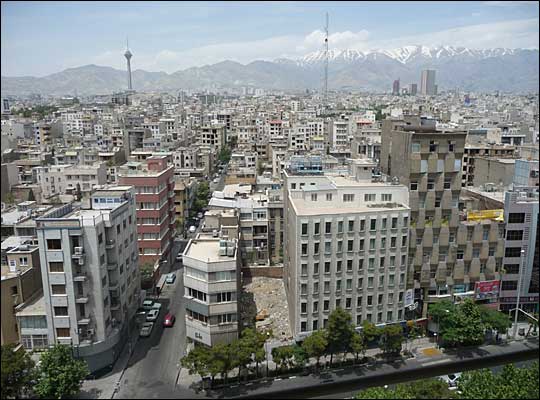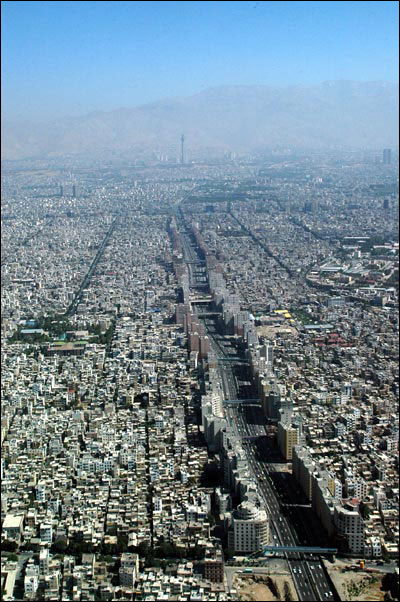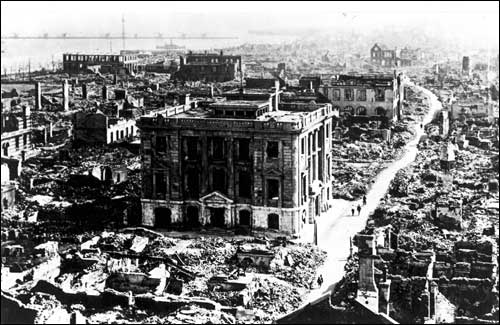Tehran, Iran is Extremely Unprepared for any Potential Overdue Earthquakes
by Edward Ulrich
News of Interest.TV
updated November 10, 2011

Tehran, Iran.
The city of Tehran, Iran which has a population of 13 million people is extremely unprepared for any overdue upcoming earthquakes. The area sits on two major fault lines, and most of the buildings in the region do not fit earthquake-safe building specifications and many are poorly constructed. Any major strike from a strong earthquake could cause one of the largest catastrophes in history.

Tehran is home to over 13 million people.
An April 22, 2010 Reuters article explains that President Mahmoud Ahmadinejad has asked that 5 million people leave the capital of Iran due to earthquake fears, but the population is continuing to grow and serious enough steps are not being taken.
A June 2010 L.A. Times article explains that some relocation efforts are underway in that city for up to 15,000 government workers, but the efforts are often illogical and many people are opposed to being relocated.
Also see the article $images of Iran.
A Model of Japanese Earthquake Preparedness

A devasting September 1, 1923 Tokyo earthquake left the area in ruins, including the city of Nihombashi as shown above. Lessons learned from such disasters have made Japan the most earthquake-prepared country in the world. Benefits from earthquake-safe construction have been seen in the Japanese earthquake of March 11, 2011, where relatively few people have died from collapsing buildings despite the earthquake being one of the largest in history.
A graphic from the metro.tokyo.jp newspaper describes a ten year plan for converting all Japanese buildings to be earthquake safe.
An excerpt from a Time magazine article describes Japanese earthquake preparedness:
Footage of Tokyo Buildings Swaying During the March 11, 2011 Japanese Earthquake

Nihombashi, Japan, September 1, 1923. It is very likely that this photo represents the extent of damage that Tehran would suffer from its next major earthquake.
A devasting September 1, 1923 Tokyo earthquake left the area in ruins, including the city of Nihombashi as shown above. Lessons learned from such disasters have made Japan the most earthquake-prepared country in the world. Benefits from earthquake-safe construction have been seen in the Japanese earthquake of March 11, 2011, where relatively few people have died from collapsing buildings despite the earthquake being one of the largest in history.
A graphic from the metro.tokyo.jp newspaper describes a ten year plan for converting all Japanese buildings to be earthquake safe.
An excerpt from a Time magazine article describes Japanese earthquake preparedness:
When disaster does hit, as it did today, Japan’s buildings fare relatively well. In 1981 Japan updated its building guidelines with an eye to earthquake science. The devastating Kobe earthquake, which claimed some 5,100 lives, spurred another round of research on earthquake safety and disaster management. In 2000, the country’s building codes were revised again, this time with specific requirements and mandatory checks. Even at the local level, preparedness is a priority: from 1979 to 2009, Shizuoka prefecture alone poured more than $4 billion into improving the safety of hospitals, schools and social welfare facilities. Though Japanese cities often shake, they rarely topple. “This gives me great faith in Japan’s building codes,” said Hong Kong University’s Charles Schencking, a historian who studies earthquakes in Japan.
Footage of Tokyo Buildings Swaying During the March 11, 2011 Japanese Earthquake





